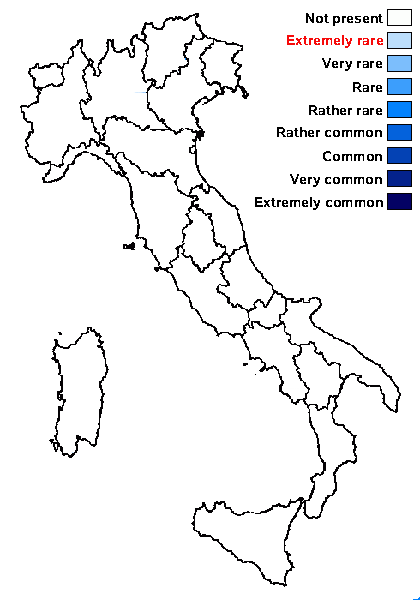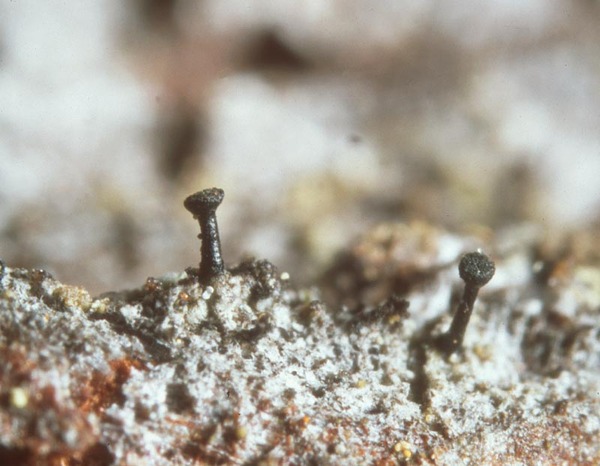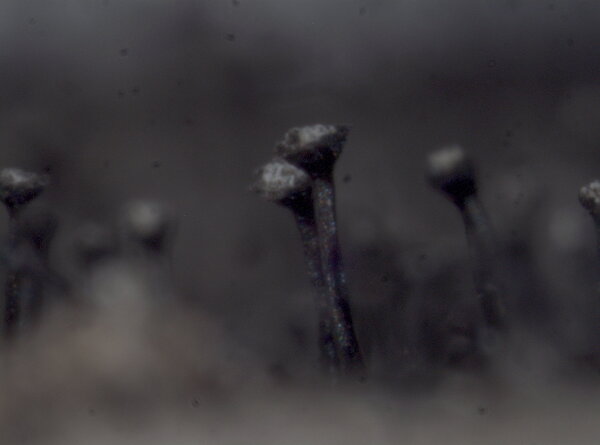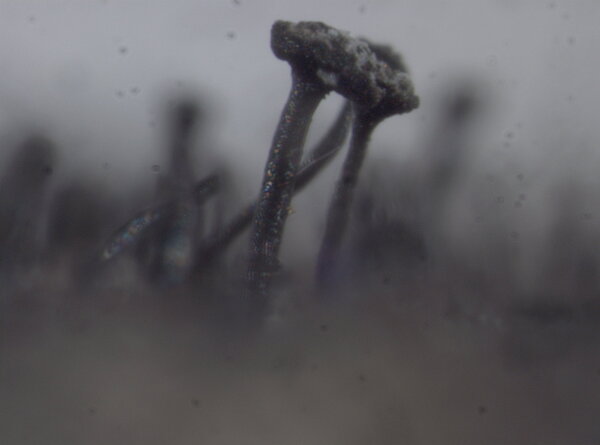Calicium parvum Tibell
Symb. Bot. Upsal., 21, 2: 84, 1975
Synonyms:
Distribution:
Description: Thallus crustose, thinly episubstratic, minutely verrucose, green to greenish grey, somehow glossy. Apothecia stalked, pin-like, black or sometimes with a fain whitish pruina on the lower side of the capitulum. Stalk black, epruinose, 0.7-1.1 mm high, 0.1-0.14 mm thick, the central part of sclerotized, dark, irregularly interwoven to periclinally arranged hyphae, the outer part slightly paler and often with a translucent, non-amyloid, gelatinous coat. Capitulum lenticular, 0.3-0.4 mm across, with a well-developed, cup-shaped exciple of anticlinally arranged cells; mazaedium well developed, black; hypothecium blackish brown, with a convex upper surface. Asci clavate, formed singly, dissolving early, with 2-3-seriately arranged ascospores. Ascospores 1-septate, dark brown, ellipsoid, 8-11 x 3.5-5 μm, with a slight, irregular ornamentation of polygonal, broad warts. Pycnidia black, frequent, 0.08-0.1 mm across. Conidia ellipsoid, 2-3 x 1-1.5 µm. Photobiont chlorococcoid. Spot tests: thallus K+ dull yellow, C-, KC-, P+ faintly yellow; ascomata I- in all parts. Chemistry: thallus with diffractaic acid (major) and 4-0-demethylbarbatic acid (minor). Note: on the bark of conifers; widespread in the Alps (all records outside the Italian territory), but not very common, and in the past probably confused with other species; to be looked for in the Italian Alps.
Growth form: Crustose
Substrata: bark
Photobiont: green algae other than Trentepohlia
Reproductive strategy: mainly sexual

Predictive model
Growth form: Crustose
Substrata: bark
Photobiont: green algae other than Trentepohlia
Reproductive strategy: mainly sexual

Predictive model
 Index Fungorum
Index Fungorum
 GBIF
GBIF






